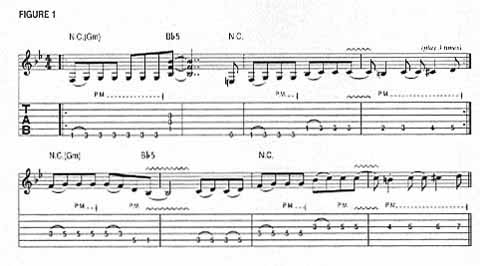The Secrets of Tone … Revealed
No 1 Oct 1998)
By Brian May
HI EVERYONE, AND WELCOME TO THE FIRST INSTALLMENT of my new Guitar World column! I feel honoured to be able to share some of my insights on guitar playing, so let’s get to it.
Of all the questions I’m asked, those involving my guitar, tone are right at the top of the list. So for the next couple of columns, I’ll try to fill you in on the two main sources of my tone: my home-built guitar and my Vox AC30 amp.
I’m often asked how I came to build my own guitar. Well, I was always very obsessed with sound, and at the time I was starting out, I thought that a lot of the recorded guitar tones I heard were “scratchy”. I felt that unless great tones could be realized on the guitar, the notes would just fly past you – that their full impact could not be appreciated. And for me to successfully replicate sounds I was hearing in my head, it was inevitable that I would end up building my own guitar.
I can’t pinpoint any one specific thing that gives my home-built guitar its distinct sound. While some of it has to do with the pickups, a lot is due to the actual resonance of the guitar itself. When my dad and I started building this guitar, I had a specific sound in mind. I knew that I wanted it to be a very “live” instrument, so I tried to design the guitar so that it would feed back through the strings and sustain in a very consonant, singing way. I don’t know if it was luck, good guidance or a combination of the two, but it worked out very well.
The guitar is built of mahogany and obtained from an old fireplace. The neck itself is very heavy. It was carved by hand and hasn’t moved a fraction of a thousandth of an inch since it was made because it’s really thick – almost like a piece of steel. It has a truss rod, but I never had to adjust it.
I originally wound my pickups by hand. They were quite nice and bright sounding, but since I made them out of available magnets which went north-south-north-south – instead of the north-north-north-north – it made them unusable when I was bending strings. So I went to the Burns music store in London and bought three off-the-shelf TriSonic pickups. These are built with bar magnets instead of pole pieces, so they have a bit more induction than your regular single-coil Fender-type pickup, resulting in a slightly thicker sound. I still use them to this day.
The only alternations I ever made to the pickups was fill them up with Aroldite, a kind of epoxy resin glue. This helped get rid of some of the microphonic squealing (the vibrations that cause unwanted pickup noise). I remember that the Burns pickups were 3 guineas (about six dollars) each, making them the most costly feature of the guitar by far!
Though some people think that the secret to my tone is my use of a wah-wah pedal as a tone filter, this is untrue (though I do recall doing this once on “Mustapha” [from Queen’s 1978 “Jazz” album] to get that strangled kind of Eastern sound). Actually what I do is experiment with different pickup combinations. You see, most switching systems don’t take advantage of the range of sounds available from a three-pickup configuration. For example, the traditional Fender switch just gives you either one pickup at a time or two combinations of the two pickups wired out of phase. But there are far more combinations than that available. And if you consider that you can turn any of the three pickups out of phase, this makes an absolutely cataclysmic difference in the sound.
I have an on-off switch and a phase reversal switch for each pickup, so I can easily mix and match every possible pickup combination. My pickups are also all wired in series as opposed to Fender pickups, which I believe are wired in parallel). If you put two pickups in series with each other and have them wired in phase, you’ll get a very warm sound, like a huge Humbucker; but if you turn one of them around (change the polarity of the wiring), they will work against each other, cancelling out the lower end. Then all you’re left with is a beautiful accentuation of the higher harmonics. That’s where my trademark “screech” comes from.
For example, on the solo to “Bohemian Rhapsody,” I’ve got the neck pickup working out of phase with the centre pickup. In this particular setting, I have the two switches for the neck and middle pickup turned on but the bridge pickup turned off. On top of that, one of the phase switches is clicked up, instead of down (it doesn’t really matter which one). This setting produces a very sweet harshness.
Another favourite combination of mine is having the neck pickup work out of phase with the bridge pickup (with the middle pickup turned off). This setting enhances much of the top end and accentuates the classic Telecaster-type crunch. I used that tone on the opening riff to “Stone Cold Crazy”, as well as on most of the song, and on “We Are The Champions”.
Of course, the guitar is just one half of my tonal equation, so next month, we’ll talk about my trusty Vox AC30 amp – the other component of my sound. See you then.
GW

